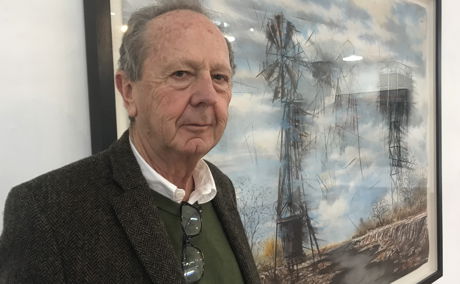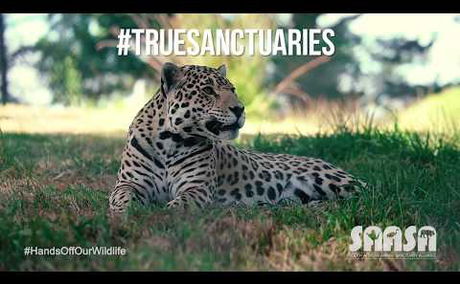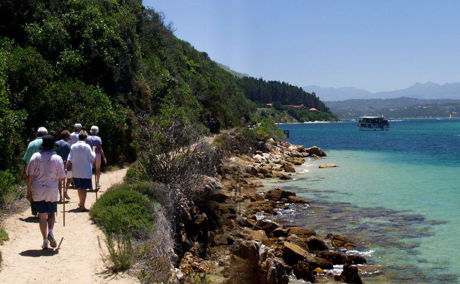Knysna’s Trent Read has been involved in the business of art for 50 years.
The vampire of Steynsburg Pass

A story from the collection 'Travels in my head' by Martin Hatchuel
If you drive from Aliwal North to Burgersdorp and down to Henning, you’ll come to a T-junction with the Molteno - Steynsburg Road; and here if you turn right you’ll come, eventually, to the Steynsburg Pass. It’s a lovely road that winds down and into the little town at the foot of the Skuurberg, with sweeping views across the Eastern Cape to the south. And when you reach the town of Steynsburg itself you’ll find it a peaceful country place, and I hope that, like we were, you’ll be met with nothing but the greatest warmth and hospitality. But if, instead, you’re met with a frightened silence, you should know that the townspeople’s façade of rural friendliness hides a terrible but entirely understandable fear of strangers.
This isn’t xenophobia. It’s much deeper than that.
And so I must warn you that the Steynsburg Pass faces, at certain times of the year, directly into the setting sun: you must therefore take extra care to avoid driving there on cloudless late summer afternoons, when the blinding rays of the sunset will distract you and play tricks with you and create the illusion of a road that runs straight and true.
And, my friend, if the worst should happen and you do lose control of your car - well, then I must ask you to please - please - do everything possible to avoid contact with the first paramedic who appears on the scene. Especially if he appears before the arrival of the ambulances...
If you’re to understand these warnings completely, you must know that, although they may sound like the stuff of comic books and B-movies, there are certain things about Vampires which are entirely true. Things like their abhorrence of garlic and mirrors and the fact that they are entirely unable to face the sun - all of which they despise because they are affirmations of the living, mortal world.
And you must also not take comfort from the belief that you are protected by your crucifix, or that you can kill a Vampire by driving a stake through his - or her - heart. For the undead are cursed to live forever, and even if they long for it, they can never find eternal rest - which is why the trappings of heaven and hell hold no sway over them.
So hardened are they by the curse under which they live that almost nothing can touch the emotions of the undead. Almost nothing - because if a Vampire once knew great love (and this would have been before his conversion to the undead), that love will last forever, but in a form that is bitter and lingering. And if he was once possessed of great talent - an artist, a writer, a musician, or a dancer - he will practice his talent into eternity, trying powerlessly to recapture the passion which had once made him feel more alive than anything he had ever known.
The Vampire of Steynsburg Pass is one of these especially tortured individuals; because, as a living person he was - and indeed, by reputation still is - hailed as the greatest of South Africa’s landscape painters (art dealers will tell you that, since the mysterious turn-of-the-century disappearance of Jan-Vincent Kemp, the value of his work has soared. They will add that the most sought-after of his paintings - and therefore the most valuable - are exquisitely coloured works characterised by an enigmatic sense of strength which captures the very spirit of the sun as it sets over the mountains of the Eastern Cape).
It’s seminal to the incidents I am about to relate that Vampires are able to transform their appearance at will, and that they can, after sunset, assume the appearance of any human being of their choice (and herein lies another warning - beware those who seek to do good works in the hours of darkness: the kindly parish priest or the much-loved community leader may be other than he seems...).
You must also know that the retina of the person who is about to die retains the image of the last beautiful thing that he or she sees. This is one way in which the body tries to protect itself from the horror of violent death. So it follows that a man who dies in a terrorist attack on a shopping mall will retain the image of the beautiful woman who was walking towards him in the instant before the explosion; and that the accident victim on Steynsburg Pass will retain the image of that same dramatic sunset which caused her mortal agony.
And, finally, I’m sure that you know that Vampires feed irregularly, and that after feeding they will often - and especially if human blood is in irregular supply - enter into a kind of hibernation, which comfortable state is, for them, the closest they can ever come to the experience of bliss.
But the Vampire’s sleep is a shallow one, and each has his own trigger to wakefulness.
For the Vampire of Steynsburg Pass, that trigger is the motor accident. And if an accident should happen at sunset, the Vampire will rise from his coffin deep in his secret cave under the Skuurberg Mountains just as the screams of tortured tyres mingle with the screams of tortured passengers. And transforming his dress into that of an experienced ambulance man, he will transport himself to the scene of the accident and, at the very moment when the last rays of the sun have disappeared from the sky, begin ministering to the victims.
Like every trained first-aider, he is adept at stabilising bleeding - although his reasons are far from altruistic. Because, like every Vampire, he cannot drink blood that has been spilled on the ground, nor can he take it from the dead: his blood must be alive when he drinks it, his victims entirely aware of what he is doing to them.
And for the Vampire of Steynsburg Pass there is another, almost equally compelling reason to keep the victims alive: his need to draw is almost as great as his need for blood. His need, particularly, to draw the sunsets which he cannot bring himself to witness in person.
So, having made sure that the survivors of the crash will live for as long as he desires, he can now - with the aid of one of those innocent looking torches with which your doctor will peer into your eyes and throat at almost every physical examination - quickly sketch the impression that remains preserved in the eyes of his victims. And then, in the hope that this time he may have the material he needs for completing just one more painting at least equal in power to that of the works he produced when he was alive, he will lean forward and gently, and with infinite tenderness, sink his incisors into the neck of his prey; and thus will he inject his venomous saliva into the bloodstream and so paralyse the body before he feasts on its warm, sweet-smelling blood.
And if time allows, he may sketch a portrait of his victim’s face before making one final gesture to ensure that his presence remains unknown to the living whose lives - and, more importantly, whose deaths - he so completely despises: he will take a shard of broken glass from the ground and slash across the neck to remove his teeth marks from the soft and yielding flesh.
And with the wail of approaching ambulances, he will withdraw into the darkness of his cave to work - trying and trying to capture that essence, that spirit, that sense of place which is cruelly and forever denied him.
* * *
And now we come to the events of the night of Sunday, April -.
It was a typical late summer accident on Steynsburg Pass. Four friends had visited in Molteno for the afternoon and, on their return and unaware that most accidents on this Pass take place in the dying minutes of the day, but nevertheless keen to get home before dark, the driver had been going too fast; and worse - he’d sped up when he thought the road was straight, so that it was only in the very final moment that he saw that, in fact, the road took a sharp turn to the right.
The tyres screamed against the tar and then against the gravel on the edge of the road, and the passengers, flung forward by the action of the breaks, cried briefly, too, until they were silenced by the force of the car hitting the little stone wall which runs alongside the road and defines the cliff-top.
Without safety belts, everyone was flung around the interior of the vehicle as it plunged and tumbled down. And when it came to a halt in a little crease in the mountain, all but one of its occupants were very close to dead.
The girl had been flung from the car as it cartwheeled, and had landed on her back in a bed of soft mud formed by recent summer rains.
When the ambulance man found her, she thought he was the most beautiful man she had ever seen. She had been bleeding from wounds to her leg and arms, and he bandaged her and spoke softly to her, and as he worked she told him that she loved him.
“Shh, shh. You’ve been hurt. Let’s concentrate on getting you better,” he said. And then he told her that, because she had fallen so far down the cliff, they must wait for climbing teams to arrive to lift her to the ambulances.
“But I haven’t heard any ambulances yet,” she said.
“I know. You’re lucky. I happened to be driving behind you when you crashed. I’ve called for help. The others will be here soon.”
He was looking into her eyes with his little torch when she pleaded with him not to leave her. “I’m scared, I don’t want to be alone.”
“Shh, shh. I won’t leave you here.” And he took a sketch pad from his pocket and a pencil and started to draw. “Look, he said. Here’s the sunset.”
He flipped the page and began to draw a portrait; and when he showed it to her she laughed and teased.
Soon she began to relax, but she suddenly gripped his arm, and cried “what about the others? You must go and look for the others.”
The beautiful ambulance man, with his pale eyes, his shining black hair and skin as white as milk, had looked at her with the greatest sympathy. “You must be strong. I’m afraid there’s not much hope for them,” he said.
“But you must go and look!”
“All right, I will. But first I’m going to give you a shot to calm you.” And she felt herself drifting off. And as the haze descended she imagined that her wounds must be much more serious than she had thought - else why would he should chose to inject the sedative into her neck?
* * *
Rosemary woke in the little Provincial Hospital to find herself surrounded by her family. And as she opened her eyes her mother began to cry, falling on her bed and hugging her fiercely and stroking her hair.
“Ma, Ma. Are the others OK?”
“My poor darling!” cried her mother and her deep sobs told the younger woman all she needed to know.
“Pa? Is it true? Pete? Mickey? Reynard?”
Unable to speak, her father simply shook his head.
She lay back against her pillows, stroking her mother’s back with her free hand. “You’ve been holding that picture ever since the ambulance men found you,” said her sister. “You wouldn’t even let them take it away from you in the operating theatre. They say that it was as if you had a death grip on the thing.
“What is it? Please, let me see it?”
“No!” cried Rosemary, hiding the paper tighter against her chest. And her sister, sensitive soul that she was, thought it best to let the subject go. She and ‘Mary had always been close and she knew that she would show her eventually.
* * *
At the inquest, the girl was asked to describe the accident, and at the end of her tale, and quite unbidden, she had said “he injected the sedative into my neck, your honour.”
There was a moment’s pause before the coroner asked one of the ambulance men if this was normal procedure. “We might inject into the neck if the arteries of the arms or legs are unavailable to us - like if they’re hidden from us by the patient’s position - or if there are extremely severe injuries to the limbs.”
“And were they, in this case?”
“No, your honour. When we found her, the patient was unconscious. She had one jagged cut on the left side of her neck and minor abrasions to her legs and arms, but they had already stopped bleeding.
“She was really lucky to be alive, but she had landed in a mud pool and we think this is what saved her.”
The coroner turned again to Rosemary, and said, not unkindly, “you must be mistaken, miss. Perhaps the shock of the accident has played tricks on your mind?”
But the girl was reluctant to let it go. “No, I am not mistaken! You are!”
“Rosemary,” said the coroner, again with much kindness in his voice, “we’re here to determine the cause of your friends’ deaths, and the conduct of the ambulance men would only be important if we believed that they were implicated in them.”
The coroner could see the tears that had come to Rosemary’s eyes. “But I want to see him again,” she said.
“Who, Rosemary? Who do you want to see again?”
“The beautiful ambulance man who helped me before the others arrived.”
“I don’t think I understand.”
“This ambulance man helped me. He said that he had called for help. I want to see him again. Why isn’t he here?”
The coroner consulted his notes before asking who had reported the accident.
“It was Jan Bergen who farms at which Mooiplaas, your honour,” said the ambulance chief.
“No, it was him!” cried the girl.
And now the coroner became stern. “I think that is enough. Rosemary, you were unconscious when you were found, and the concussion must have played tricks with your memory. Thank you for your time.
“Now. I need to know if the ambulance crew noticed anything unusual about the bodies of the deceased.”
“We did, your honour,” said the chief. “Two things. They all seemed to have lost almost all of their blood, and they all had jagged cuts on the left sides of their necks.”
“In what way is this unusual?”
“Just that the injuries were all so similar, your honour. But the loss of blood probably had to do with the cuts on their necks.”
“Is this inconsistent with this kind of accident?”
“No, sir.”
At this point, the coroner had been tempted to return a verdict of death by accident, but two things worried him: the first was simple - there was something about the way the girl was behaving that was unusual. But the second - well, he couldn’t put his finger on the second problem, but he knew that he was uneasy. And so he decided that further investigation was necessary.
He asked for a second reading of the medical reports, and there it was - the excessive loss of blood. “Was there evidence of massive bleeding?” he asked.
“Yes sir,” said the medical examiner who had conducted the post-mortems. “The bodies contained very little blood.”
“I am aware of that, Doctor. But what I mean is, was there an excessive amount of blood on the ground surrounding the bodies when first they were discovered?”
It was the ambulance chief who realised what the coroner was alluding to, and who finally put the pieces together. “Your honour, you’re right. There was almost no blood on the ground and there was very little on the interior of the car.”
The late summer heat made the silence in the court room all the more intense.
“This isn’t the first time that this has happened, is it?”
The ambulance man looked at his colleagues, the question silent on his lips. “No, your honour,” said one of the juniors. “It was like that at that accident last March.”
“And remember the one where we found that little girl...?” said another.
The records were called for, and examined, and every one of them showed that the victims had died with almost no blood in their veins; and that there was very little blood on the scene. And, it was noted, that every single one of the victims displayed jagged lacerations to the left side of the neck.
The long silence was heightened by the monotonous and far away calling of a turtle dove. The windows had been thrown wide in search of even the slightest of cooling breezes, but the court had been sitting for hours, and the air in the room had remained still and now it was stale and sour.
And yet the heat turned immediately to ice when the coroner delivered his verdict “I have no alternative but to find that death was caused, in all three cases, by Vampirism.”
When the clamour in the court room had finally been brought under his control, he turned to the girl once more. “Miss,” he said, “I have to conclude that you have been inordinately lucky. I have no doubt that the man you saw - and the man who draw those pictures - was a Vampire, one of the undead, and that, for some reason known only to himself, he spared you a fate worse than death.
“Perhaps it would be best if you tried to forget what happened altogether.
“For the rest, we can only pray that the good Lord will remove this terrible apparition from our midst.”
* * *
Mariek laughed when I finished this story. “Prove it,” she said.
And so I took her along to the little village museum, and I asked to see the curator, who turned out to be a woman of no more than about twenty eight. And we spent a fascinating hour looking at the collections with her; and I saw that she liked Mariekie’s company, so that I became bold enough to ask if she would show us the portrait that was supposed to have been drawn by the Steynsburg Vampire. She was shy and reluctant at first, but our obvious interest must have won her over.
“Why would you want to see that?” asked the curator
I made up a story about having had a near accident on the Steynsburg Pass as the sun was setting last evening, and this must have been reason enough for her.
“It’s in my quarters,” she had said, and she slipped through a door behind the museum.
I noticed that Mariek was becoming uncomfortable, but I said nothing, for I was petrified and knew that my voice would shake if I spoke.
When the curator returned at last, she was holding an old leather document wallet in both hands - a beautifully tooled piece with all the patina of many year’s use and care.
It contained just one sheet of the most extraordinary paper I have ever seen: it looked quite new, and I could see that it was tough and very strong - but it felt light and almost as if it wasn’t there when I held it between my fingers.
Mariek refused to touch it. I put it back in its wallet and we fled as quickly as we could, forgetting our manners and leaving without thanking or even greeting the sweet young curator of the Steynsburg Museum.
We drove for some minutes before she said “Martin, what did you see when you looked at the picture?”
She knew that I was angry. Hadn’t she seen it, too?
“It was a portrait of me,” I said, sulkily. “The little fraud went into the back and drew a picture of me. With a stupid grin on my face with long teeth like a Vampire.”
“No, Martin,” she said, very quietly. “It was a portrait of me.”

This work is licensed under a Creative Commons Attribution-NonCommercial-NoDerivatives 4.0 International License.
Further Reading
Total commitment and a love for animals drives this Plettenberg Bay woman to try and change the law about whether animals can own the land on which they live, and so protect their habitat forever.
Opened to guests in 1984, Knysna’s Featherbed Nature Reserve quickly grew into one of the Garden Route’s biggest tourism attractions. Martin Hatchuel takes a look at its origins and early history under its founder, William Smith. Please scroll down for a gallery of pics.



Share This Post